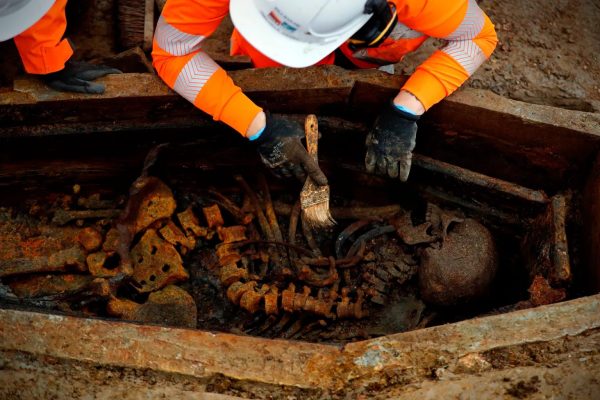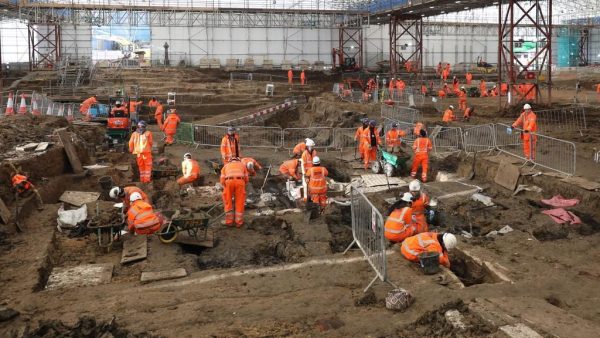A major archaeological excavation is currently underway in London, where 60,000 skeletons from a cemetery that is 230 years old are expected to be unearthed.

The excavation is part of the construction of the new high-speed railway between Birmingham and the capital. The burial ground, located near Euston Station, was used from 1790 to 1853. The skeletons will be exhumed to make way for the expansion of Euston.
The project, known as HS2 (High-Speed 2), involves a team of archaeologists working along the 150-mile route, delving into 10,000 years of British history.

The cemetery at St James’s Gardens, the former site of late 18th and 19th-century burials, holds an estimated 60,000 people, including notable figures like Lord George Gordon, who led a crowd of 60,000 from St George’s Fields to the Houses of Parliament in 1780, calling for the repeal of the Catholic Relief Act.
Archaeologists have been using machines to remove the topsoil and then conducting further excavation by hand once coffins or human remains are exposed.

HS2 project leaders state that all artifacts and human remains will be treated with dignity, care, and respect. The exhumation and reburial process will be carried out in collaboration with Historic England, the Church of England, and the local parish.
While the removal of a public park and an old burial ground is unusual, HS2’s impact on St James’s Gardens highlights the challenges associated with large-scale infrastructure projects and the need to balance development with preserving historical sites.

The archaeological exploration along the HS2 route encompasses various periods, from prehistoric and Roman settlements to those from the Industrial Revolution and World War II.
The project involves over a thousand archaeologists and heritage specialists, making it the largest archaeological exploration ever in Britain.





